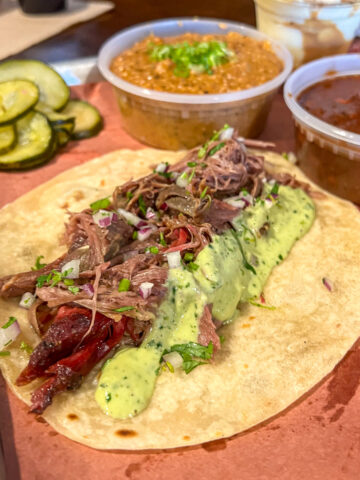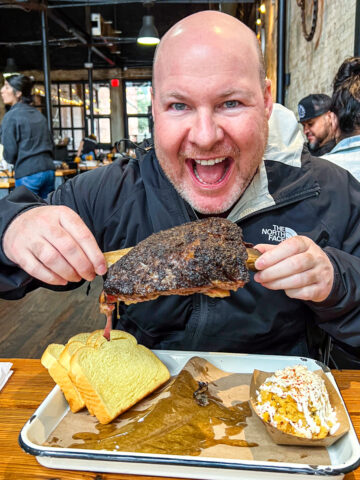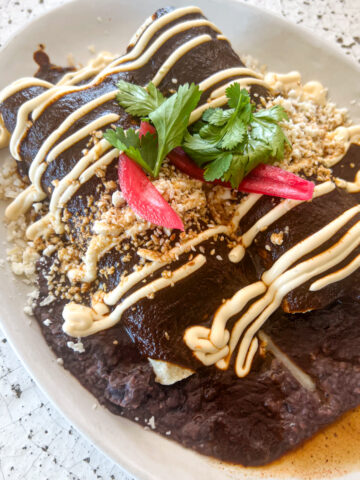What do you get when you pair a winery with a southern white rhino? A Rhinory, of course!
The Rhinory offers a unique Hill Country experience, allowing guests to taste their Texas wines in the company of Blake, a 4,000-pound rhinoceros.
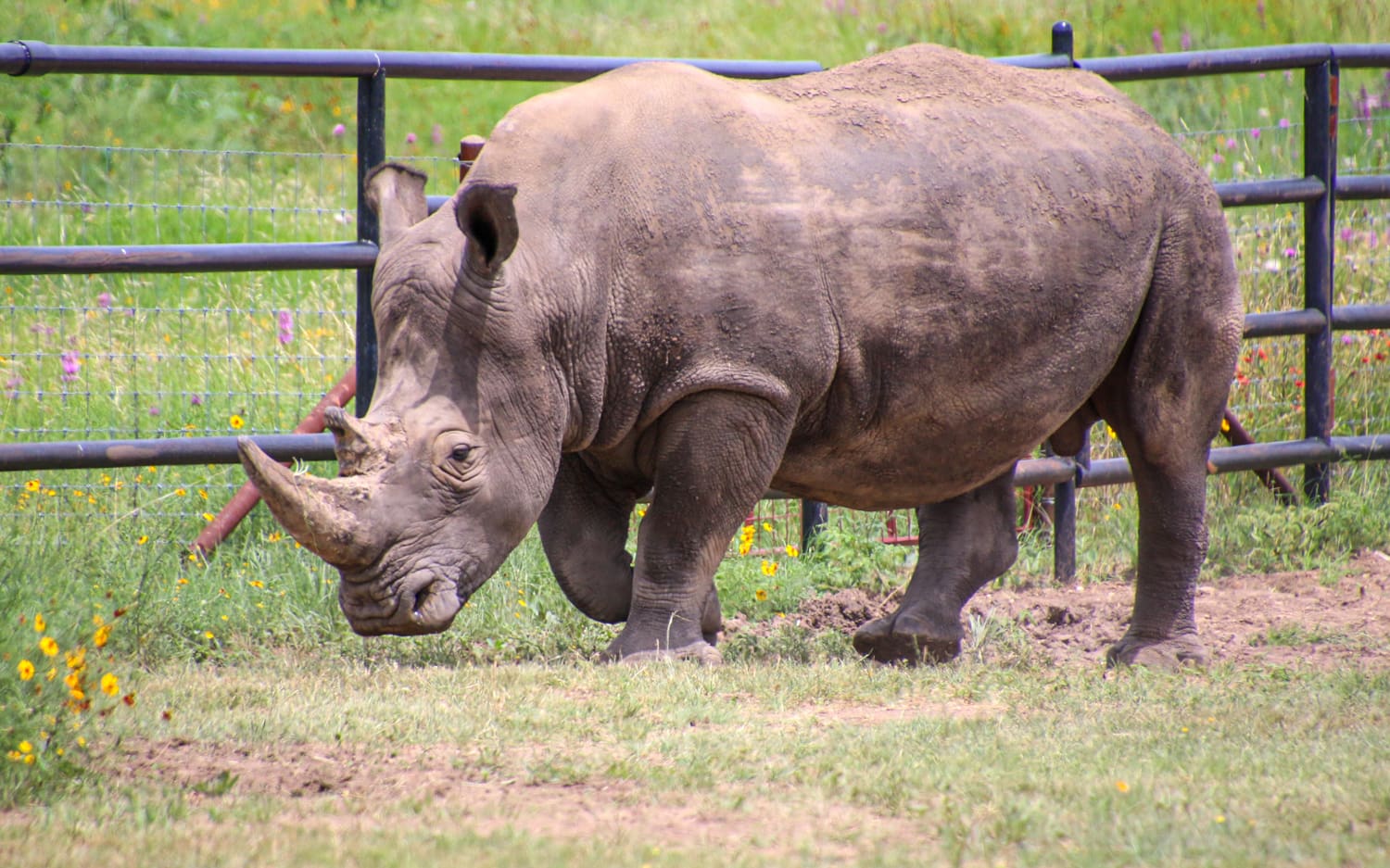
When it came time for Kel and me to plan our first trip to Fredericksburg of 2023, the Rhinory was tops on our list of wineries to visit.
I made a reservation for the Reserve Tasting via the winery's website and contacted Craig Stevens, the owner, to see if Kel and I could join a scheduled Rhino Experience.
We wanted to share as much about Blake and their conservation efforts with our readers as possible. He kindly agreed, and between the tour and tasting, we spent about three hours at the Rhinory. Frankly, I didn't want to leave!
Table of Contents
About Rhinory
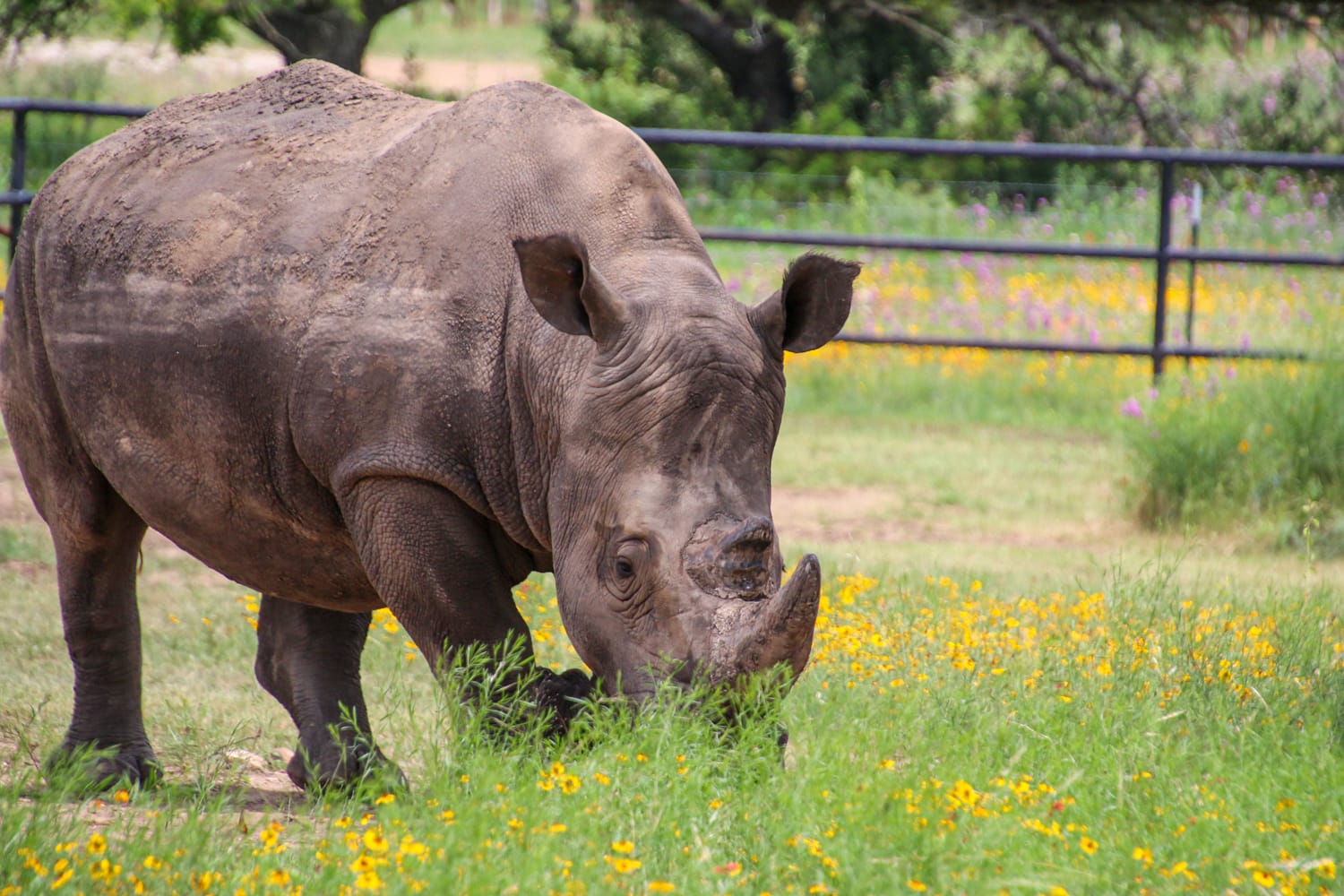
The motivation to get more involved in rhino conversation struck Craig Stevens and his wife in 2016 while on safari in Kruger National Park, South Africa.
During their trip, two rhinos were poached for their horns. The sadness of such a loss, combined with bearing witness to the trauma felt by the local community, which relies on tourism, led them to take action.
They'd long thought about opening a winery, and with a 55-acre ranch in the heart of Texas Hill Country, they saw an opportunity to build a rhino preserve as well.
After years of hard work, surely more than they had envisioned, the Rhinory began welcoming guests in the spring of 2022.

Where is the Rhinory?
The Rhinory is about 65 miles west of Austin and northwest of San Antonio. It's about a 75-minute drive from either city, making it an easy day trip.
Or, if you're spending the weekend in historic Fredericksburg, it's a short 13-mile drive east of town on Route 290.
Rhino Experience
The Rhino Experiences offered by the winery allow guests to learn more about Blake and rhino conservation during a 30 to 45-minute guided tour.
A complimentary glass of wine is provided in a plastic cup to take with you. Tours include a wine-tasting reservation but not the cost of the tasting.
Rhino experiences are available Friday through Sunday for $125 per person. Children 12 and over can join in the fun. And 100% of the fee goes toward rhino conservation. Reservations are required and can be made online.
Our Guide
Our 10:30 a.m. tour was led by Christine Bobko, the senior rhino keeper, who has over 30 years of experience and previously worked at the Denver Zoo. She is Vice President of the International Rhino Keeper Association (IRKA).
Christine was hired to build the rhino conservation program from scratch, a unique opportunity that led her to leave Colorado for Texas.

Where'd They Find a Rhino?
Blake, she told us, is on a breeding loan from the Fossil Rim Wildlife Center, a non-profit organization about 165 miles north of the Rhinory, near Dallas.
Fossil Rim is a well-respected reserve with numerous national and international affiliations, including The International Rhino Foundation (IRF), created with the help of Fossil Rim's late owner, Jim Jackson.
The IRF's mission is "To ensure the survival of rhinos through strategic partnerships, targeted protection, and scientifically sound interventions."
The Barn
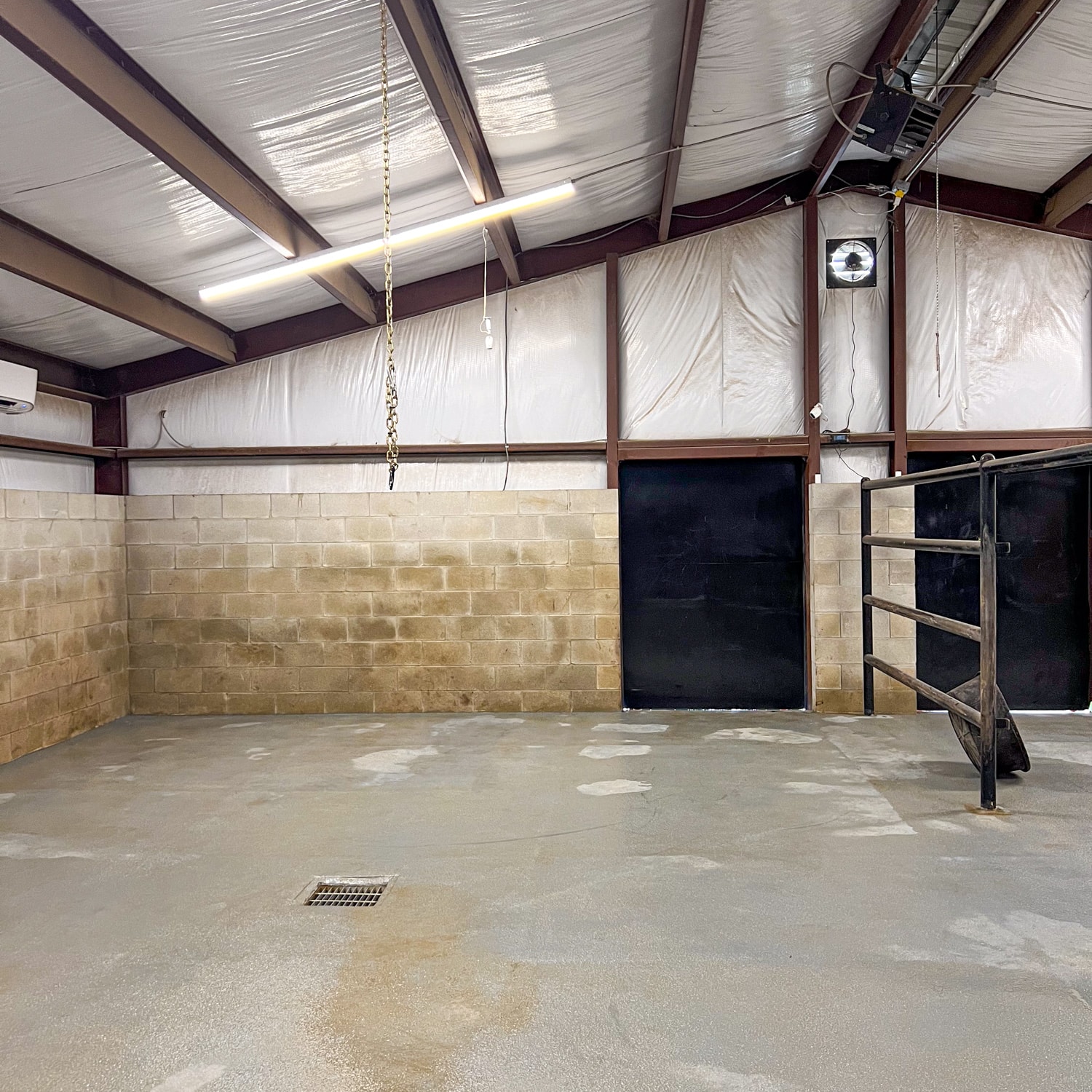
Our Rhino Experience began with the barn where Blake sleeps at night. It was specially constructed to be a comfortable space for a two-to-four-ton rhino.
It's temperature controlled, well-lit, and built with a flooring material that's the appropriate density to support a large animal like Blake.
Rhinos are used to walking around on the natural ground, so materials like concrete would be too tough on their bodies.
And, by the way, rhinos are the second largest land animal after elephants.
In addition to learning about the barn, Christine gave us a safety briefing ahead of our encounter with Blake in a special area adjacent to his enclosure.
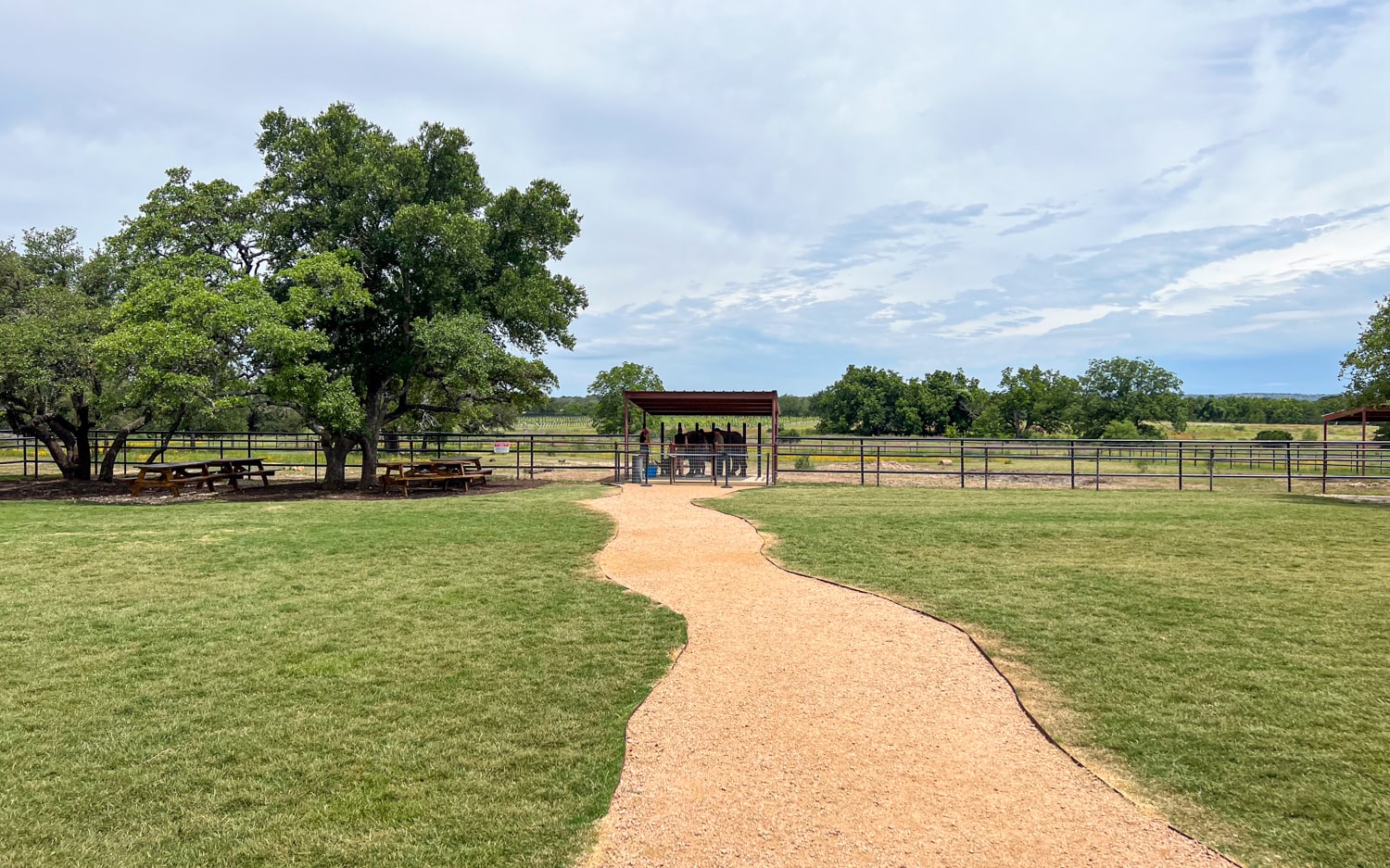
We'd be safely separated from Blake by large poles strong enough to resist a rhino leaning against them. For what I hope are obvious reasons, nobody is allowed to enter the actual rhino enclosure.
As one other couple was touring with us, we'd take turns getting close to him, with no more than two people within the designated space.
We'd be allowed to touch him on his shoulder and the side of his back. Touching of the face and ears is not permitted.
Meeting Blake

After we learned the Rhinory rules of engagement, we left the barn for the short walk to Blake's enclosure. At the end of a gravel path, we arrived at a small slab of concrete with a roof for shade.
Large steel poles were all that separated us from 4,000 pounds of southern white rhinoceros.
One of the other rhino keepers had already drawn Blake to the visitor area with some delicious hay.
Christine explained that all training is done with positive reinforcement. Trainers use whistles and touch.
Rhinos are tactile. They can feel human touch despite their thick hides, which are often covered in mud to keep them cool and protect them from insects.
Lifespan and Population

In captivity, a white rhino such as Blake can expect to live 45 to 50 years. In the wild, he'd be lucky to reach 20 years of age, given the threat from poachers (who brutally cut off their horns and leave them to die).
According to the IRF, only about 16,000 white rhinos are left in the wild. They're classified as "Near Threatened" by the IUCN Red List of Threatened Species, which is why conservation efforts are critical.
The other four species of rhinos are in even more trouble. There are only about 6,000 black rhinos. The greater one-horned rhinos (4,000), Sumatran rhinos (fewer than 80), and Javan rhinos (76) are all Critically Endangered species.
Blake is a part of the Species Survival Plan (SSP) managed by the Association of Zoos and Aquariums (AZA). This program is helping to ensure the long-term survival of threatened and endangered species.
Diet
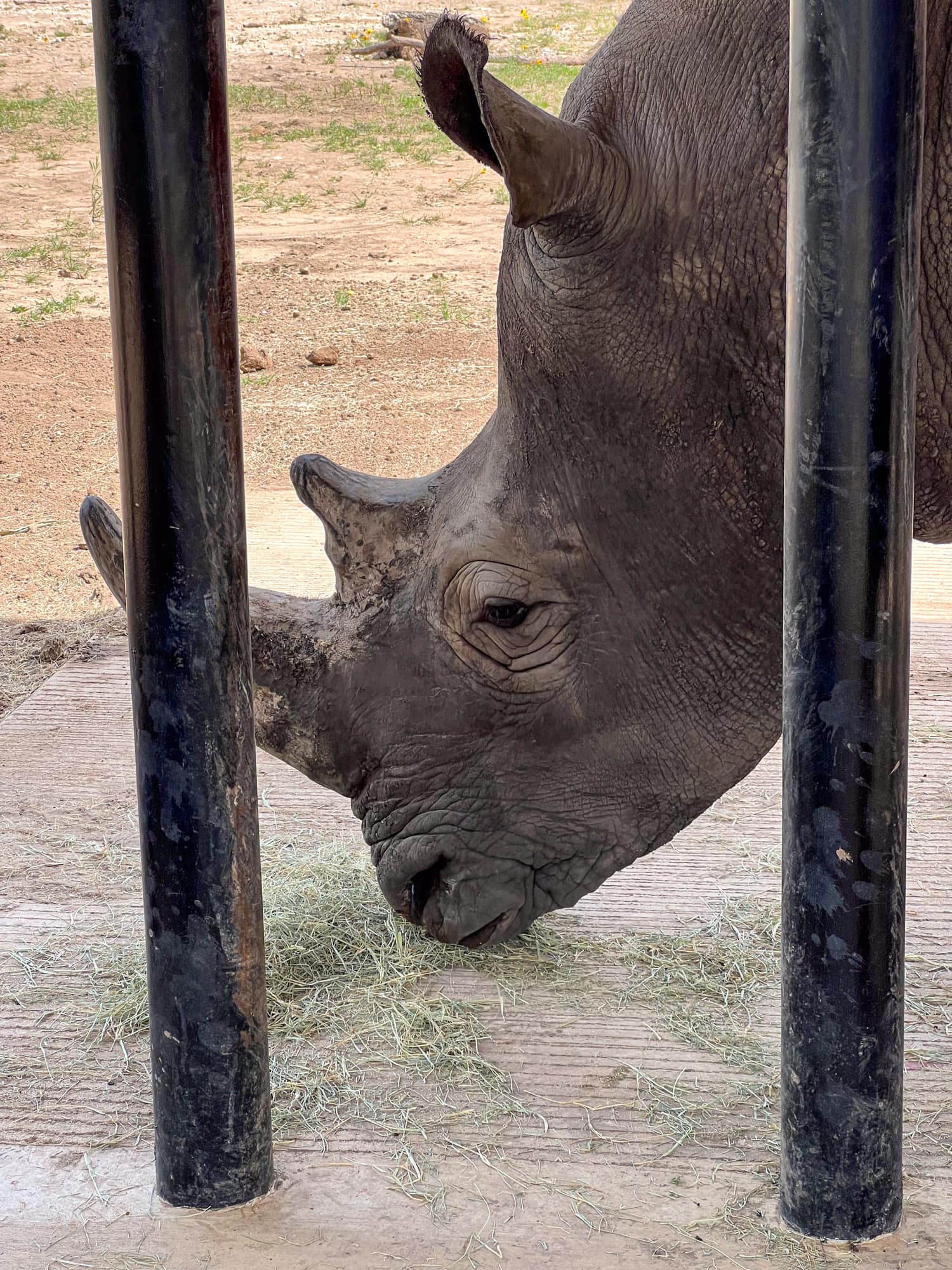
As I write this, Blake is four and a half years old and requires 50 pounds of coastal hay daily.
In about three years, when he reaches maturity and becomes sexually active, he'll weigh twice as much, about 8,000 pounds, and eat 75 to 100 pounds of hay daily.
Social Habits
Male white rhinos are typically alone after three years of age, though they may hang out with similar-aged rhinos for some time.
When they reach maturity at age seven or eight, they'll prefer to go solo again and establish their territory. Much to my surprise, a male white rhino's territory is only about two square miles.
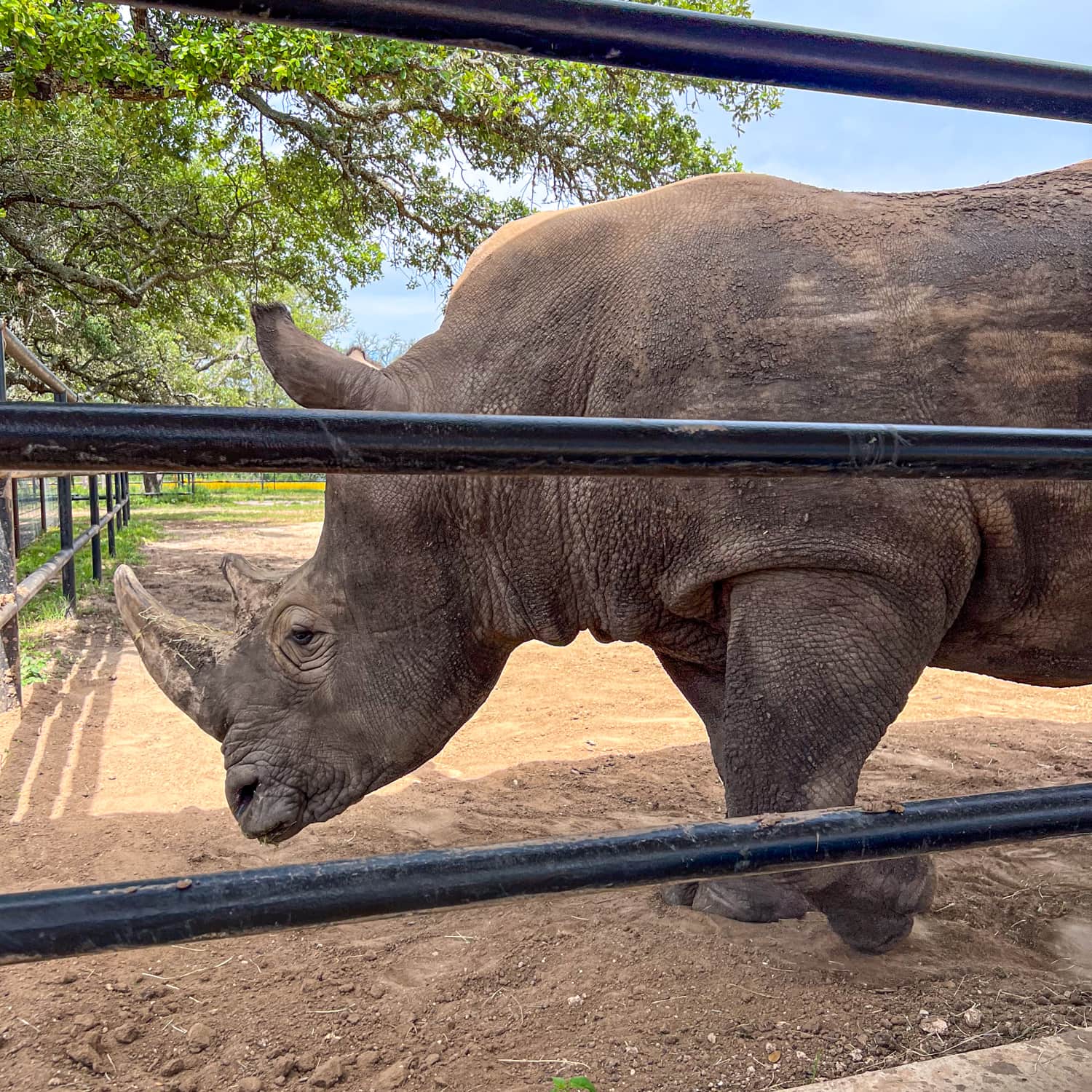
On the other hand, female white rhinos are more social and use a herd mentality as a form of self-defense. The strength-in-numbers approach helps to protect them and their calves from predators.
The Rhinory can comfortably accommodate up to 10 southern white rhinos, given their modest territorial needs.
Breeding
Speaking of the ladies, the owners of Rhinory eventually intend to introduce Blake to some female rhinos when he's ready.
Christine explained that if an adolescent male rhino meets a female rhino, she'll put him in the "friend zone." And once a female rhino does this, she'll never mate with him. She sees him as too familiar.
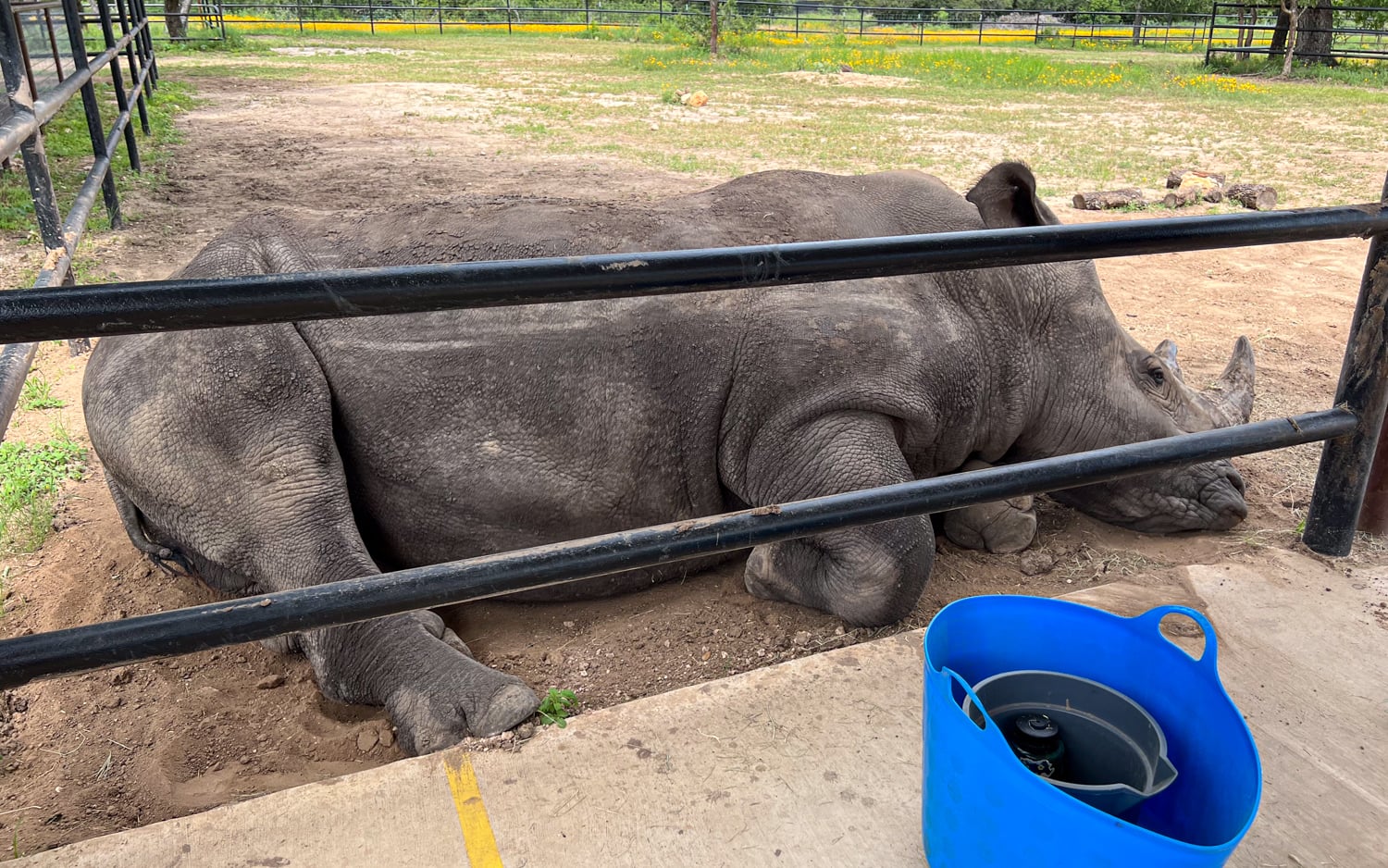
So, in the meantime, the Rhinory plans to build a separate barn for the eventual arrival of female rhinos. Those female rhinos will be chosen based on their genetic profiles, which will be as different from Blake's as possible.
Per Christine, white rhinos are not the easiest species for captive breeding.
The current best practice introduces one mature male to two to four females. The females may include one older rhino with some experience and a few younger ones.
Space is essential during this time. And, incredibly, there's only about a 48-hour window when a female white rhino can accept a male to engage in sex.
The gestation period for southern white rhinos is 16 months. Given the time required to give birth and raise a calve, they can potentially have 5-6 calves in a lifetime. For that reason, every rhino's birth is vital to the species' survival.

My Thoughts
Throughout our time with Christine, she emphasized that rhino conservation is, first and foremost, the priority at the Rhinory. Everything from the ground Blake walks around to his diet, veterinary care, and security is accounted for.
Side note: I was amazed to learn Fredericksburg has not one but two rhino veterinarians!
As a result, I walked away from our Rhino Experience feeling confident that was the case and excited to recommend the Rhinory.

In addition to everything I learned from Christine, I appreciated how personal the experience felt. We had plenty of time up close with Blake, and Christine answered all our questions.
In 2008, I went on my first safari, a 5-day camping trip in Kruger National Park. I loved spending each morning and afternoon on game drives looking for the Big 5 (lions, leopards, rhinos, Cape buffalo, and elephants).
I only had one brief glimpse of a white rhino on that trip, and it was through binoculars. Seeing Blake up close was much more affordable than going to Africa and felt more intimate than the experience you get at a zoo.
Let's switch gears and return to the tasting room to try some of Rhinory's wines.
Rhinory Wine Tasting

We returned to the Rhinory tasting room, where we had a table with a view of Blake's enclosure reserved for the wine tasting. Assisting us with the wines that day was Tyler, whose wife is one of the rhino keepers.
The Rhinory offers two tasting options: Reserve wines from Texas and South Africa for $30 and Keras wines that are entirely South African for $50. Each tasting includes samples of five wines.
Reserve Wines
Wanting to mix it up, I chose the Reserve tasting, which began with a 2019 Blanc Du Bois with notes of lemonade and lime zest. The second wine was a 2019 Chenin Blanc, also from Texas.

The third was to be a 2018 Chardonnay from South Africa. As that's the one I'd chosen to walk with for the Rhino Experience, I asked if I could try something else.
Tyler was kind enough to substitute the 2018 Keras Chardonnay, which was oh-so-buttery. It was my favorite, costing $30/glass or $90 per bottle.
The fourth wine, a 2021 Shiraz, is from Stellenbosch, South Africa. This was my second favorite Rhinory wine of the six I tried.
In 2008, before I arrived in Kruger Park for the safari, I'd spent ten days in Cape Town, including one on a wine tour of beautiful Stellenbosch.

The fifth and final wine of the Rhinory Reserve tasting was a 2020 Cabernet Sauvignon from Stellenbosch, South Africa. It was a little too strong for me. I took it outside and walked the grounds as it was my last.
Outdoor Seating
There are several seating areas around the rhino enclosure with oak trees and picnic tables. They offer ample opportunity for you to observe Blake as he grazes in his pen.
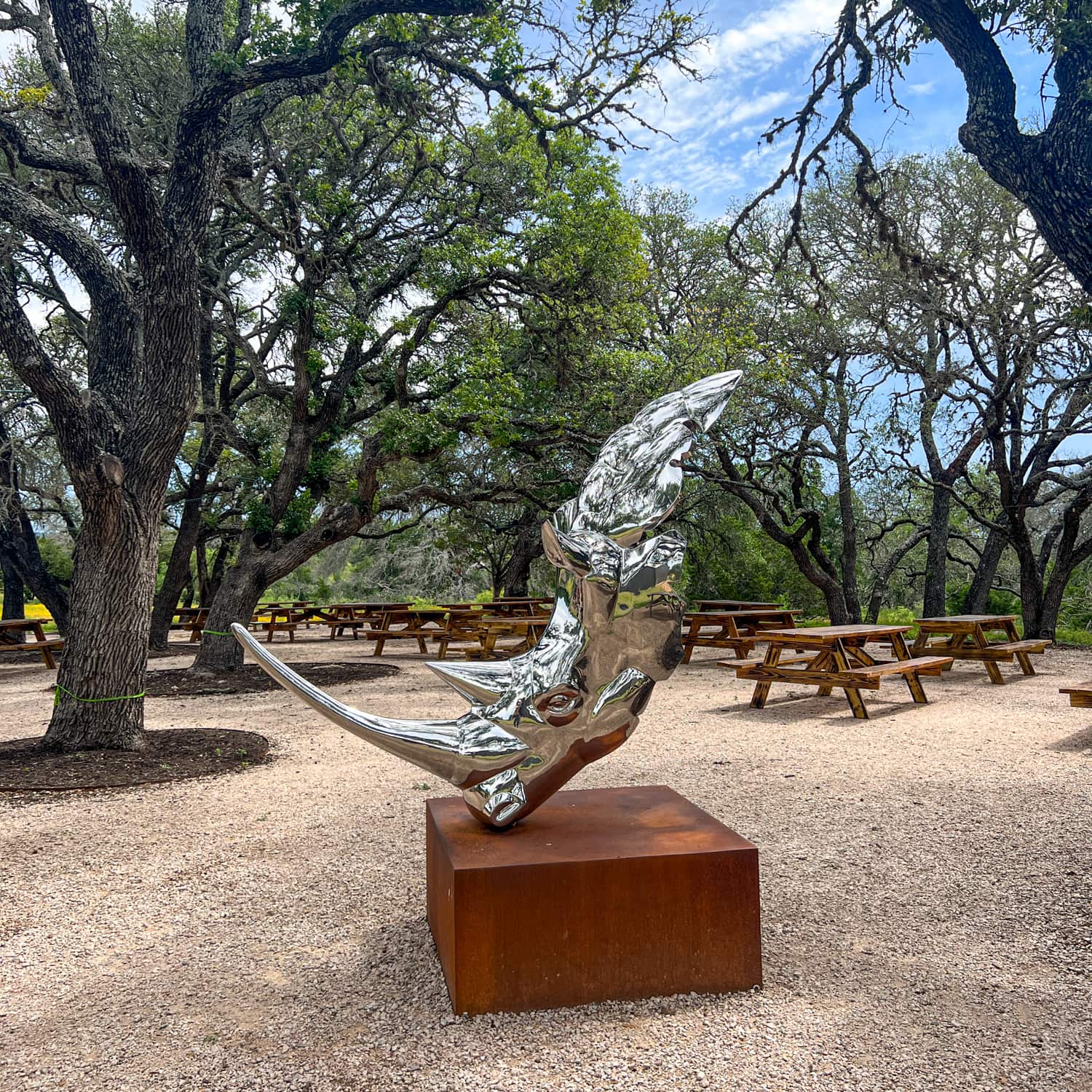
We were told he's more active in the morning, as the temperatures are cooler, so that's when I'd recommend you visit. It would've been fun to see him rolling around in one of the mud puddles, perhaps on a future visit!
Visit the Rhinory
The Rhinory is open to the public daily from 11 a.m. to 5:30 p.m., with the last pours of wine occurring at 5 p.m. There's no cost to visit the winery and see Blake in person.
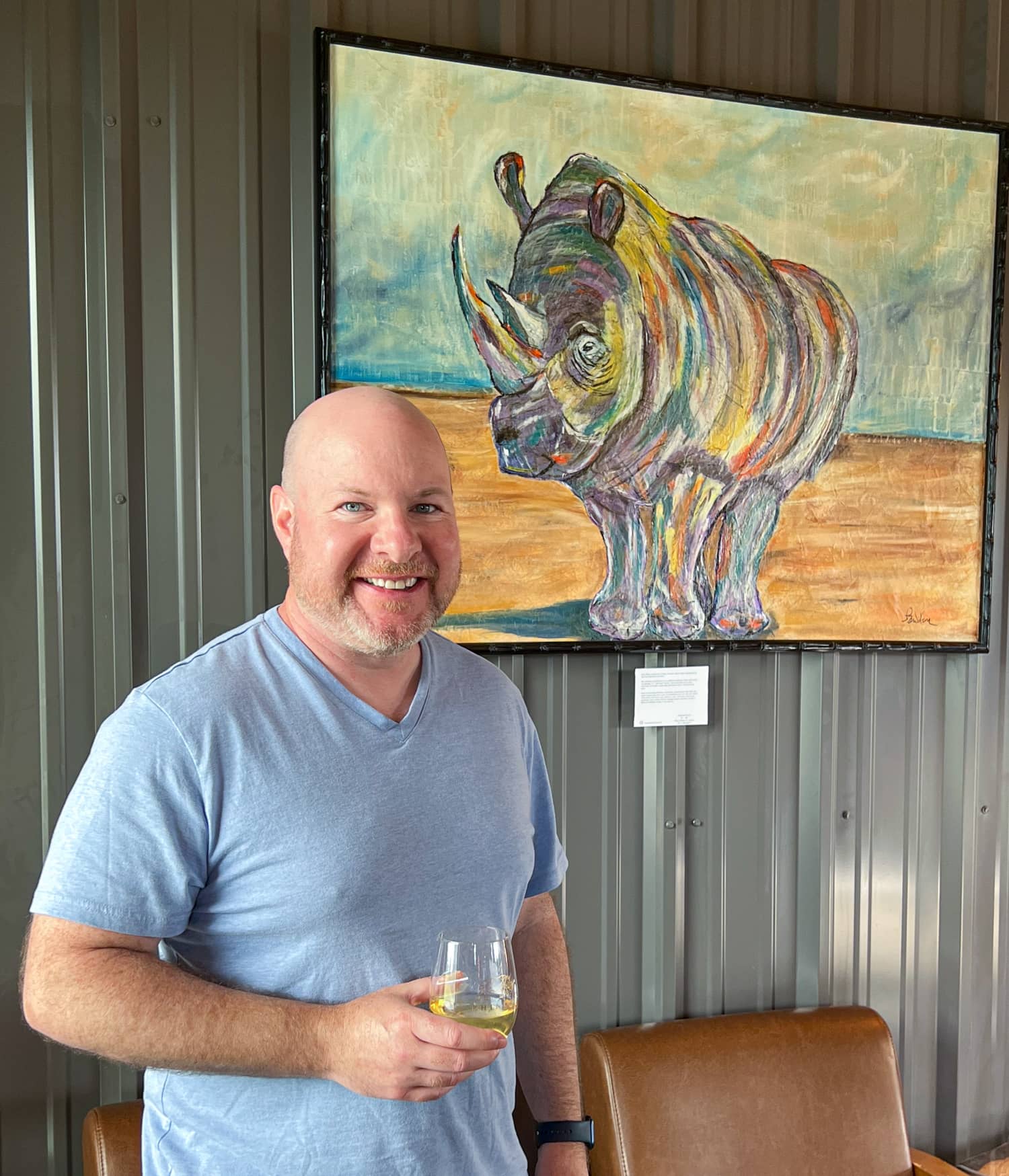
Since 20% of proceeds from the winery go to international rhino conservation, I'd encourage you to buy something if you can.
Whether you purchase wine or a souvenir, such as the t-shirts and bottle openers they have for sale, you'll be supporting Blake and his friends in their fight for survival.
In its first year of operation alone, the Rhinory donated $100,000 to rhino conservation programs.
Rhinory Winery
13112 US-290
Fredericksburg, TX 78624
Website
_____
Our Rhino Experience was provided at no cost to help promote rhino conservation.

